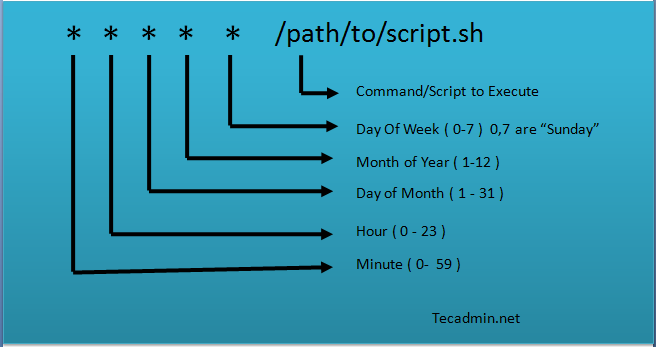Beginner's Guide to Scheduling Tasks with Cron Jobs in Linux
 Anushka Bhujang Pawar
Anushka Bhujang Pawar
Introduction
Cron jobs are essential for automating repetitive tasks in Unix-based systems. Whether you're a developer or a system administrator, mastering cron jobs can save you a lot of time and effort. In this post, we will explore how to set up a cron job in Linux.
What is a Cron Job?
A cron job is a scheduled task that runs at specific intervals on Unix-like operating systems. The cron daemon is responsible for executing these tasks. Each user has their own crontab (cron table) file where they can define their cron jobs.
Basic Syntax
A cron job consists of five time-and-date fields followed by the command to be executed:

Setting Up a Cron Job
- Open the Crontab File
To edit the crontab file for the current user, use the following command:
codecrontab -e
- Add a Cron Job
Suppose you want to run a script every day at 2:30 AM. You would add the following line to the crontab file:
30 2 * * * /path/to/your/script.sh
- Save and Exit
Save the file and exit the editor. The cron daemon will automatically pick up the changes.
Common Examples
Run a Backup Script Every Day at Midnight
0 0 * * * /path/to/backup.shRun a Cleanup Script Every Sunday at 3 AM
0 3 * * 0 /path/to/cleanup.shRun a Monitoring Script Every 15 Minutes
*/15 * * * * /path/to/monitor.sh
Advanced Features
Redirect Output to a File
To capture the output of a cron job, you can redirect it to a file:
* * * * * /path/to/command.sh > /path/to/logfile 2>&1Use Environment Variables
You can set environment variables in the crontab file:
SHELL=/bin/bash PATH=/usr/local/sbin:/usr/local/bin:/sbin:/bin:/usr/sbin:/usr/bin
Troubleshooting
Check Cron Logs
If your cron job isn't working, check the cron logs for errors. On most systems, you can find the logs in
/var/log/syslogor/var/log/cron.Use Absolute Paths
Always use absolute paths to your scripts and commands to avoid issues related to the environment.
Further Referances
Crontab Guru - An interactive tool to help you create cron job schedules.
Official Cron Documentation - The manual page for crontab.
Subscribe to my newsletter
Read articles from Anushka Bhujang Pawar directly inside your inbox. Subscribe to the newsletter, and don't miss out.
Written by
